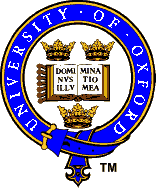
|
MINOS |

|
![]()

|
MINOS |

|
![]()
I have spent the last 5 years planing, designing and building the MINOS experiment. MINOS is a long baseline neutrino oscillation experiment that is located in North America. We are sending a beam of muon neutrinos, which have been generated by the NuMI beam at Fermilab, to Soudan (not Sudan). The neutrinos travel 735 km from their production point to our far detector. We assume that neutrinos that have been generated as muon neutrinos transform themselves into tau (or electron) neutrinos during this journey. We have build two detectors to test this hypothesis. The near detector is located at Fermilab to measure the beam composition before the neutrinos transformed and the far detector is 700 m underground in the Soudan Underground Mine. A detailed description of our contribution to MINOS can be found below.
|
|
VA ASIC development We have collaborated with the Norwegian Company IDEAS to develop a 16/32 channel fast high dynamic range ASIC. It digitizes the signals from the far detector PMTs and multiplexes it to a single ADC. Details of the ASIC and the rest of the far detector electronics can be found here. |
|
|
VFB Layout and Production The above ASIC is mounted on the VA Front End Board (VFB) it controls the VA module. The VFB was developed together with Harvard University and laid-out and produced by the us. |
|
|
Far Detector Timing System The Far Detector Timing System distributes precision timing system to the front-end electronics. The distributed clock is locked to GPS timing receiver, which has an absolute accuracy of around 200 nsec. However, the relative precision of the timing signals across the detector is much better and around 2 nsec. |
|
|
Near Detector Multi-Anode Photomultiplier Tubes The light that is produced by neutrino interaction in the scintillator of MINOS is detected by Multi-Anode PMTs (MAPMTs). We were responsible to evaluate possible PMTs for use in our near detector. We settled on the R5900-00-M64 by Hamamatsu and where responsible for the production testing and mounting of these MAPMTs. The results of our testing are documented here and have been published in N.I.M. A. |
|
|
Test Beam We put A small 1m x 1m 3.6m version of MINOS (called CalDet) in the T7 and T11 test beams at the CERN/PS. This mini-MINOS was exposed to electrons, muons, pions and protons of momenta between 0.5 and 10 GeV. We used this data to calibrate the response of our steel/scintillator tracking calorimeter to these particles and verified the performance of the electronics, simulations and calibration chain. This work is essential to understand the energy scale of the real MINOS detectors. |
|
|
Detector Calibration I am working on the electronics calibration of the far detector. This includes tuning of the dynode and sparcification threshold and measurements of the VA non-linearity. We are also working on the relative strip-to-strip and detector-to-detector calibration using cosmic muons. |
|
|
Neutral Current Event Reconstruction The main measurement of MINOS will be done using charge current events. They consist of a long muon track and an hadronic shower. These events a relatively easy to trigger and reconstruct. Neutral current events, however, have much lower energy and consist of an hadronic shower only. There are therefor much more difficult to trigger and reconstruct. We have therefor developed trigger and reconstruction algorithms, which allow the reconstruction of hadronic showers down to energies below 0.5 GeV. |
|
|
Search for sterile Neutrinos Neutral current events do have an important role to play in MINOS. I am the co-cordinator of the neutral current group in MINOS. These events are the only tool that will allow us to determine, whether sterile neutrinos exist and participate in neutrino oscillations. If sterile neutrinos exist and participate in oscillations, we will see a deficit of neutral current events in the far detector. The main deficit will be at the lowest events energies. The reconstruction of the neutral current energy spectrum will therefore tell us, whether some of the muon neutrinos have oscillated into sterile neutrinos. |
|
|
BBC Radio 5 Live: What is a Neutrino? |
|
|
PPARC press release |
|
|
Fermilab press release |
|
|
The First Neutrino at Soudan |
|
|
Science-World.Net |
|
|
...and many more! |
![]()
(last edited by A. Weber on
5-Apr-2005
)